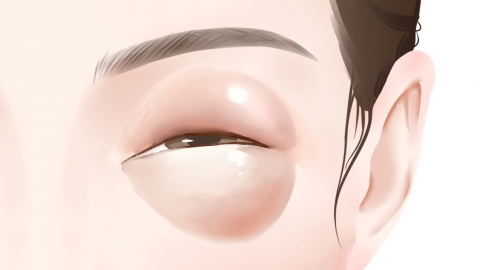What should I do if my eyelids become swollen after receiving wrinkle-relaxing injections?
Generally speaking, wrinkle-relaxing injections are common cosmetic medical procedures used to reduce facial wrinkles. Eyelid swelling after receiving wrinkle-relaxing injections might be caused by local inflammatory reactions, impaired blood circulation, allergic reactions, conjunctivitis, or meibomian gland inflammation. Treatments may include general care or medication under a physician's guidance. Detailed explanations are as follows:

1. Local Inflammatory Reaction
After injection of wrinkle-relaxing needles, the local tissue may develop a mild inflammatory reaction, resulting in edema. Cold compresses can be used to reduce local blood flow and alleviate swelling. Improvement is usually noticeable within 2-3 hours after applying a cold compress. In addition to swelling, there may also be mild pain or redness.
2. Impaired Blood Circulation
Small blood vessels may be damaged during the injection, leading to impaired local blood circulation and subsequent swelling. Gentle local massage at home can help promote blood circulation and accelerate the resolution of swelling. Noticeable improvement can be seen after 7-10 days of massage. Symptoms may also include mild bruising.
3. Allergic Reaction
Some patients may experience an allergic reaction to components in the wrinkle-relaxing injection, leading to localized swelling. Phototherapy, such as red or blue light therapy, can be administered at a medical facility to alleviate allergic reactions. The typical cost ranges from 500 to 2000 yuan. Improvement is usually seen within 24 hours after anti-allergy treatment. Symptoms may include itching and rash.
4. Conjunctivitis
Conjunctivitis may be caused by microbial infections such as bacteria, viruses, or chlamydia. After infection, the conjunctiva becomes congested and swollen, potentially spreading to the eyelid. Accompanying symptoms may include red eyes, foreign body sensation, tearing, and increased secretions. Treatment may involve the use of medications such as levofloxacin eye drops, tobramycin eye drops, or acyclovir eye drops, as recommended by a physician.
5. Meibomian Gland Inflammation
Meibomian gland inflammation may be caused by infection of the meibomian glands by Staphylococcus aureus. When the meibomian glands become inflamed, localized redness, swelling, and pain may occur, possibly leading to eyelid swelling. Symptoms may also include localized eyelid induration, significant tenderness, and suppuration. Treatment should follow medical advice and may involve medications such as cefradine capsules, amoxicillin capsules, or ibuprofen tablets.
In daily life, patients should maintain eye hygiene, regularly clean the eyes to prevent bacterial infection, avoid excessive eye strain, reduce prolonged use of electronic devices, and ensure adequate rest.








